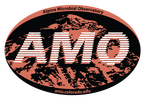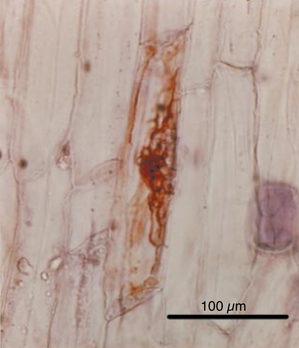|
by Cliff Bueno de Mesquita Phialophora is a genus of fungus containing taxa capable of a variety of functions. They can be parasitic on fruits and humans, saprotrophic (decompose dead plant material), or mutualistic with plants. At our field site at Niwot Ridge in the Colorado Rocky Mountains, Phialophora was one of the most abundant fungi we found living inside of plant roots. We found DNA sequences of this genus in 126 of 177 plants that we sampled. Before extracting the DNA from plant roots, we washed them in ethanol and bleach to sterilize the root surface; thus we believe this fungus is inhabiting the inside of plant roots and directly interacting with the plant. We are interested in this fungus because it is a dark septate fungus that can benefit plant growth. For example, Newsham (1999) found that the fungus Phialophora graminicola benefited the growth of its host plant. We’ve known that this group of fungi lives in the alpine for a while now. A former student in the lab, Chris Schadt, found a fungus in this genus (Phialophora gregata) inside of an alpine plant back in 2001 (Fig. 1). Interestingly, the sequences from our 2016 survey at Niwot were closely related to Phialophora that were found inside of moss tissues on King George Island in Antarctica, which suggests that this genus is widespread geographically. We are currently trying to culture this fungus to isolate it and conduct experiments with it in the greenhouse to see if this particular strain benefits plant growth.
References Newsham, K. K. 1999: Phialophora graminicola , a dark septate fungus, is a beneficial associate of the grass Vulpia ciliata ssp. ambigua. New Phytologist, 144: 517–524, doi: https://doi.org/10.1046/j.1469-8137.1999.00537.x. Newsham, K. K. 2011: A meta-analysis of plant responses to dark septate root endophytes. New Phytologist, 190: 783–793, doi: https://doi.org/10.1111/j.1469-8137.2010.03611.x. Schadt, C. W., Mullen, R. B., and Schmidt, S. K. 2001: Isolation and phylogenetic identification of a dark-septate fungus associated with the alpine plant Ranunculus adoneus. New Phytologist, 150: 747–755. Yu, N. H., Kim, J. A., Jeong, M.-H., Cheong, Y. H., Hong, S. G., Jung, J. S., … Hur, J.-S. 2014: Diversity of endophytic fungi associated with bryophyte in the maritime Antarctic (King George Island). Polar Biology, 37: 27–36, doi: https://doi.org/10.1007/s00300-013-1406-5.
0 Comments
|
AuthorVarious lab members contribute to the MoM Blog Archives
October 2023
Categories |


 RSS Feed
RSS Feed
